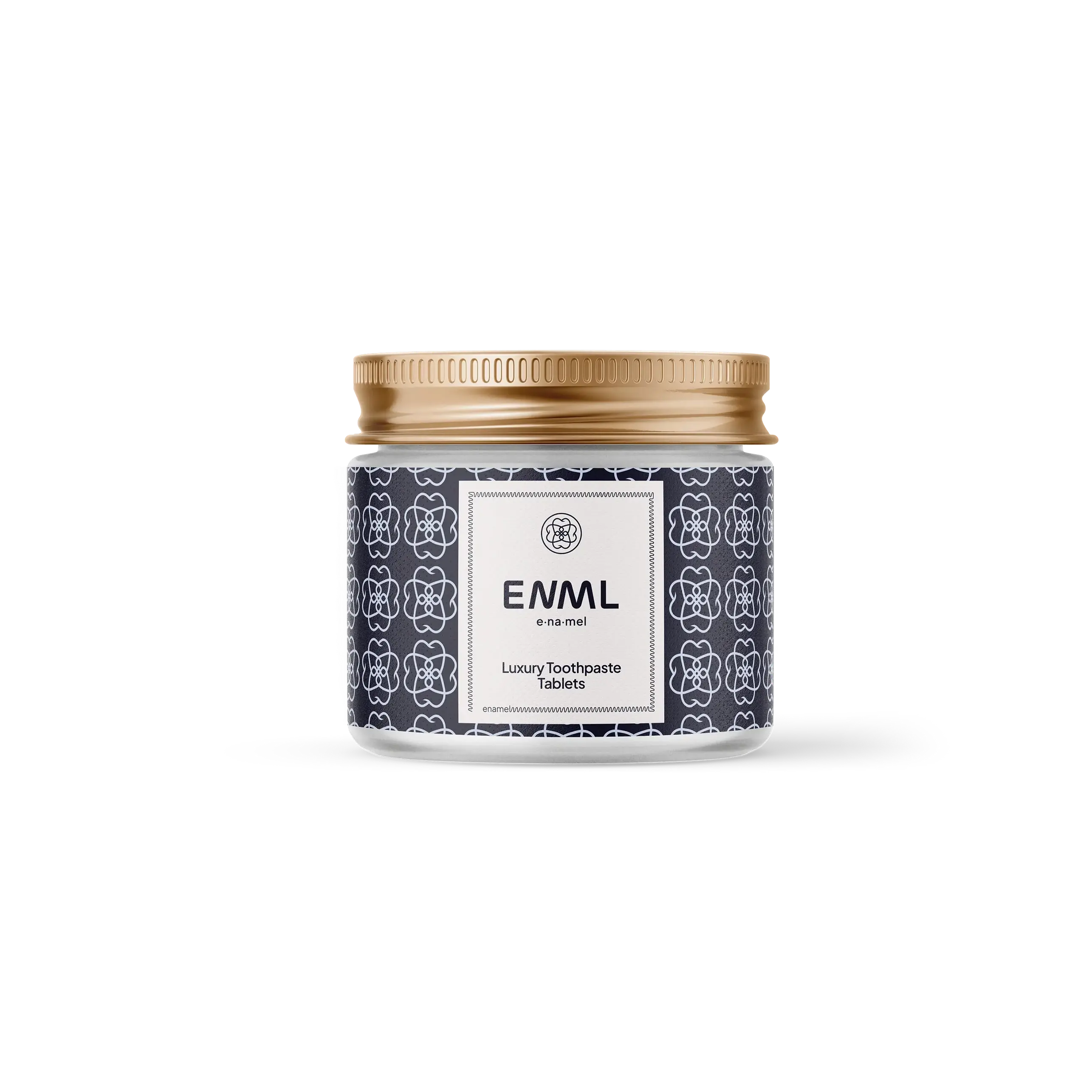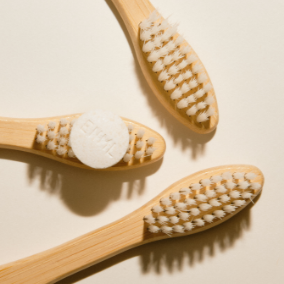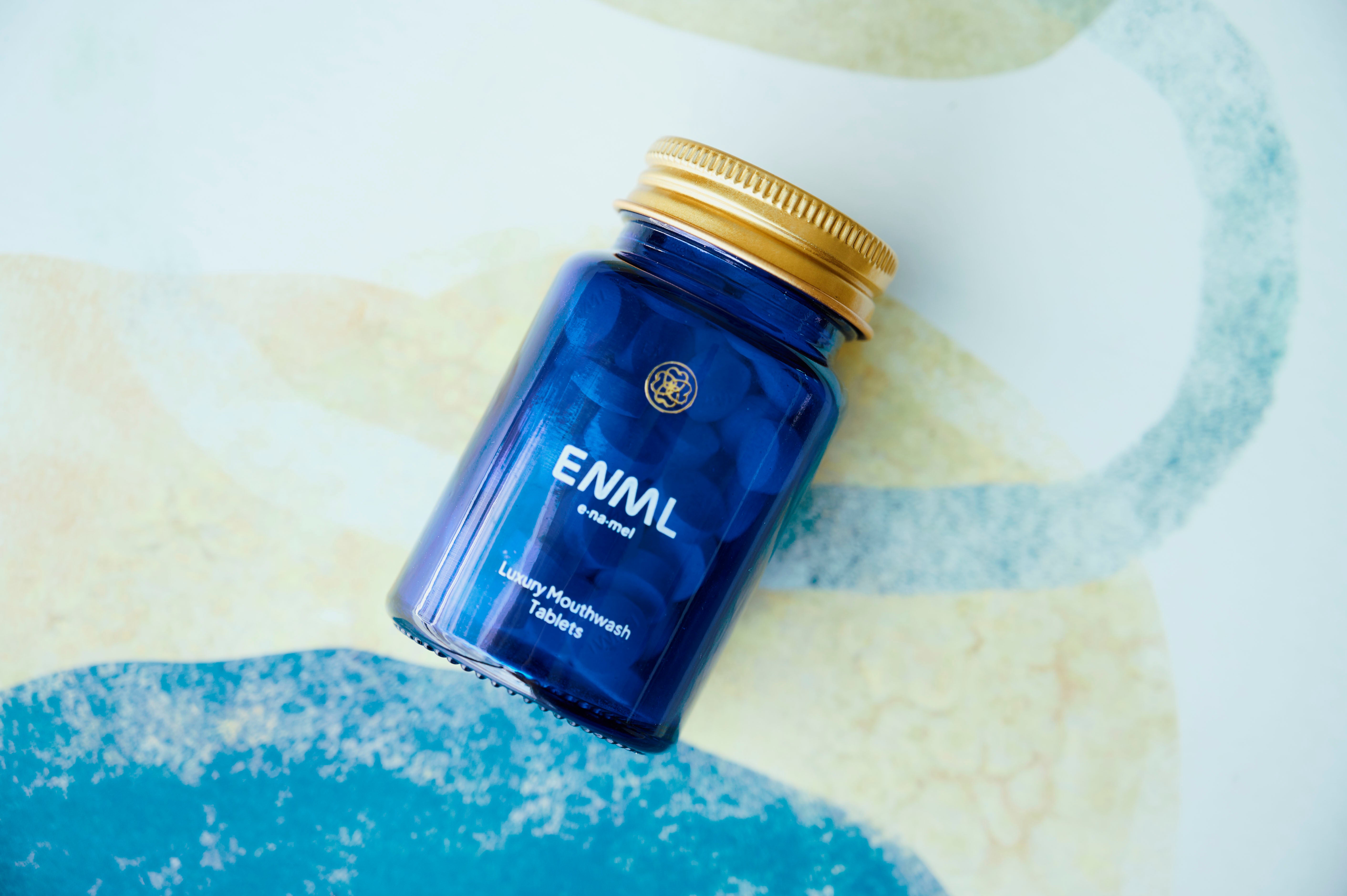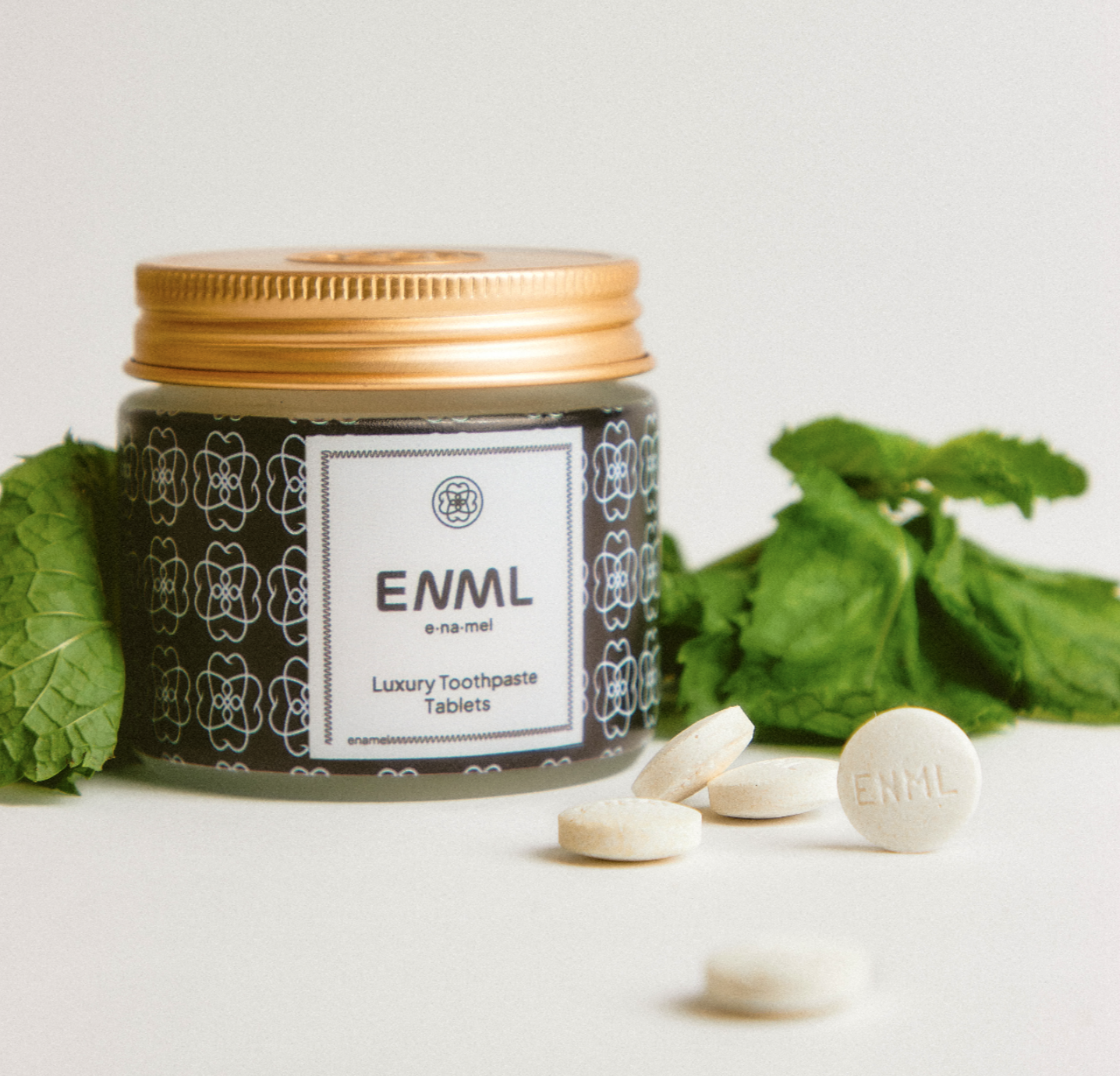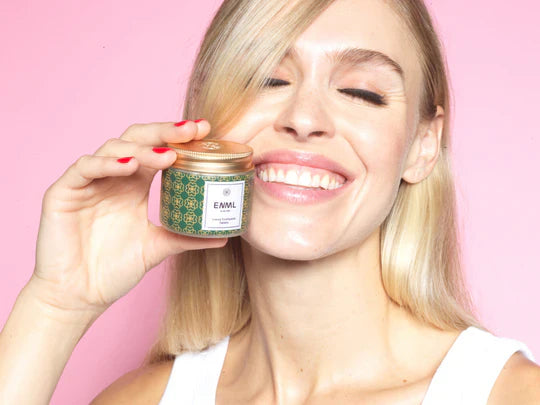The growing interest in natural and eco-friendly oral care has many people rethinking their toothpaste choices. Concerns about the chemicals in traditional toothpaste—from sodium lauryl sulfate (SLS) to artificial flavors and microplastics—as well as the environmental impact of non-recyclable packaging, are driving consumers toward natural alternatives. Whether you’re seeking to reduce chemical exposure, embrace sustainable products, or simply explore a holistic approach to oral health, natural alternatives to toothpaste offer exciting possibilities for a healthier smile.
In this guide, we break down several of the most effective and natural alternatives—starting with toothpaste tablets, our very own flagship product. Learn how each method works, discover its benefits and limitations, and find practical tips for incorporating these alternatives into your daily routine. We’ll also share insights on choosing complementary ingredients in high-quality, fluoride-free toothpastes that protect your enamel while aligning with your eco-friendly values.
Top Natural Alternatives to Toothpaste
Below are six effective natural methods for maintaining oral hygiene. Each option is explained in detail, with practical usage tips and considerations to help you decide which ones fit best into your routine.
1. Toothpaste Tablets: A Modern, Eco-Friendly Option
What They Are:
Toothpaste tablets are a plastic-free alternative that offer all the benefits of conventional toothpaste in a compact, eco-friendly form. These tablets are designed to dissolve into a gentle paste when mixed with a small amount of water—delivering effective cleaning power while avoiding preservatives, harmful chemicals, and wasteful packaging.

How to Use Them:
- Chew one tablet until it breaks down into a paste.
- Apply the paste onto your toothbrush and brush as normal.
- Rinse your mouth thoroughly after brushing.
Benefits:
- Convenience: They are easy to carry, small sized, and can discreetly fit into purses or glove compartments for midday brushing or mouthwashing.
- Comprehensive Oral Care: Formulated to clean and protect your teeth—with or without added fluoride—making them an ideal, all-in-one solution.
-
Eco-Friendly: A sustainable choice that aligns with a zero-waste lifestyle while offering the benefits of modern dental care.
2. Oil Pulling with Coconut Oil
What It Is:
Oil pulling is an ancient Ayurvedic practice that involves swishing oil around in your mouth to remove bacteria and promote oral health. Although traditionally sesame or sunflower oil was used, coconut oil is now a top choice due to its high lauric acid content, which provides strong antibacterial benefits.
How to Use It:
- Take about 1 tablespoon of coconut oil.
- Swish it around in your mouth for 10–15 minutes—making sure not to swallow the oil.
- Spit the oil into the trash (avoid the sink) and rinse with warm water.
- Follow up with your usual brushing routine.
Benefits:
- Reduces bad breath and inflammation.
- Helps fight plaque buildup for improved gum health.
Tip:
Oil pulling is best used as a supplement to your regular oral care, especially when paired with a high-quality natural toothpaste.
3. Baking Soda with Essential Oils
What It Is:
Baking soda (sodium bicarbonate) is a well-known, gentle abrasive that removes surface stains and plaque. Its naturally alkaline composition helps neutralize oral acids, contributing to a healthier pH balance.
How to Use It:
- Dip a damp toothbrush into baking soda or mix a small amount with water to form a paste.
- Optionally add a drop of peppermint or your favorite essential oil for enhanced freshness.
- Brush gently for optimal cleaning—limiting use to once or twice a week to prevent enamel wear.
Benefits:
- Effectively polishes teeth and freshens breath.
- Helps maintain pH balance in the mouth.
Caution:
Its abrasive nature means it should be used sparingly to avoid damaging tooth enamel.
4. Saltwater Rinse
What It Is:
A saltwater rinse is one of the simplest, most accessible alternatives for bolstering oral hygiene. Saltwater naturally acts as an antiseptic that can reduce bacteria, soothe inflamed gums, and promote healing.
How to Use It:
- Dissolve ½ teaspoon of salt in one cup of warm water.
- Swish the solution in your mouth for 30–60 seconds.
- Use post-dental procedures or when experiencing gum irritation to aid recovery.
Benefits:
- Affordable and readily available.
- Helps reduce swelling and relieve discomfort in the gums.
5. Hydrogen Peroxide Rinse
What It Is:
Hydrogen peroxide is a longstanding antiseptic known for its antibacterial properties and its ability to help whiten teeth by removing surface stains.
How to Use It:
- Dilute a 3% hydrogen peroxide solution with an equal amount of water.
- Swish the mixture in your mouth for 30 seconds.
- Rinse thoroughly with water afterward.
Benefits:
- Promotes oral hygiene by reducing bacteria.
- Acts as a mild stain remover for a brighter smile.
Caution:
Limit use to avoid irritation of sensitive gums or mucous membranes.
6. Activated Charcoal for Occasional Deep Cleaning
What It Is:
Activated charcoal, extracted from natural sources like coconut shells or wood, is a trending ingredient in natural oral care for its potent stain-removing properties. It binds to toxins and impurities, helping to lift them from the teeth.
How to Use It:
- Use a charcoal-infused toothpaste or lightly dip a wet toothbrush into activated charcoal powder.
- Brush gently for 2–3 minutes.
- Rinse very well to avoid residual discoloration.
Benefits:
- Brightens your smile by removing surface stains.
- Provides an alternative for occasional deep cleaning.
Caution:
Due to its abrasive qualities, it should not replace daily brushing—limit use to avoid enamel damage.
Enhancing Your Oral Care Routine with Natural Ingredients
Beyond these alternatives, consider complementing your routine with a high-quality, natural toothpaste. Look for products enriched with ingredients like micro-hydroxyapatite, which naturally remineralizes enamel, calcium carbonate for gentle polishing, and xylitol to help reduce cavity-causing bacteria—all while remaining fluoride-free if that aligns with your health goals.
Final Thoughts: Embrace a Natural, Healthier Smile
Natural alternatives to toothpaste can be a powerful way to support your oral health routine while reducing your exposure to synthetic chemicals and lowering your environmental footprint. Whether you’re leading with toothpaste tablets or integrating oil pulling, saltwater rinses, and other natural methods, remember that balance is key. Use these alternatives as supplements or temporary solutions alongside a high-quality, complementary toothpaste for comprehensive dental care.
Ready to take your oral care routine to the next level?
Discover our ENML range of eco-friendly, fluoride-free, and plastic-free oral care products—including our flagship toothpaste tablets—crafted by leading dental professionals for a cleaner, greener smile.
Switch today for a healthier mouth and a more sustainable lifestyle!


